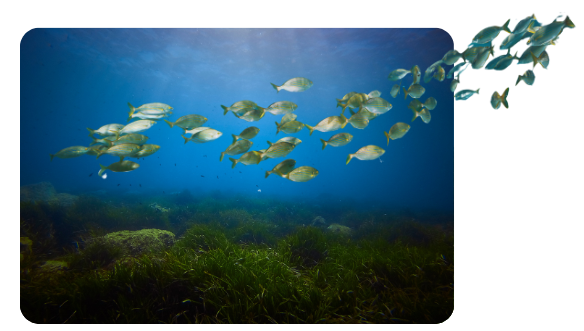Story
Going viral: What happens to infected phytoplankton?
10 June 2021
Even phytoplankton, one of the ocean’s smallest but most important groups of organisms, are susceptible to viruses. A new study takes an in-depth look at how these interactions occur.

Phytoplankton are one of the most important groups of primary producers on the planet, playing a crucial role in removing carbon dioxide from the atmosphere and supporting fisheries. They can also form huge blooms, which can sometimes be toxic and dangerous to other marine lifeforms. Understanding the interactions between phytoplankton and the viruses that infect them is, therefore, key to broadening our knowledge of these extraordinary organisms.
Such interactions can be studied under experimental conditions in the laboratory, but a computer model instead allows researchers to more readily explore a huge range of possible interactions and the factors that impact upon them.
Scientists at Plymouth Marine Laboratory, Cardiff University, and the Marine Biological Association built a model that shows how a single virus interacts with the phytoplankton it is infecting, ultimately destroying the cells through a process called lysis which causes it to burst open releasing hundreds of new virus particles.
Several influencing factors were integrated into the model: abiotic, such as light, nutrient level and the amount of particles suspending in the water around; traits of the phytoplankton host – size, growth rate and movement; and the traits of the virus, such as its size and the length of time between it infecting a host and the host bursting.
The model simulations showed how the virus succeeded when all of these factors combined in particular ways. For example, while larger phytoplankton hosts could spread the virus more widely when they burst, for a given nutrient load there are fewer cells of such a size, so ultimately smaller phytoplankton that moved around more were more susceptible to virus attack.
The timing of the interaction was also important, with an optimum point for the virus between the infection developing too quickly, limiting the spread amongst the host , or too late, by which point the host population would be limited by nutrient or light availability which led to decreased burst sizes.
The amount of suspended particles in the water also played a role. Where there were a high number of suspended particles, they adsorbed the virus, preventing it reaching the phytoplankton effectively. This is of particular importance for coastal phytoplankton for which nutrients introduced from the land that promote their growth is often also associated with sediments that would hinder viral attack.
Lead author and PML Marine Plankton Ecologist, Professor Kevin Flynn, said: “Using models really allows us to understand these complex and important interactions at an incredibly detailed level. The tool that we created in this study builds on previous models, being more conceptually realistic and taking a holistic view with a wide range of influencing factors included. The next step is to run the model in more complex conditions to see how cycles of virus-host interactions shape phytoplankton succession.”
Related information
‘Modelling the Effects of Traits and Abiotic Factors on Viral Lysis in Phytoplankton’ is published Open Access now in Frontiers in Marine Science
